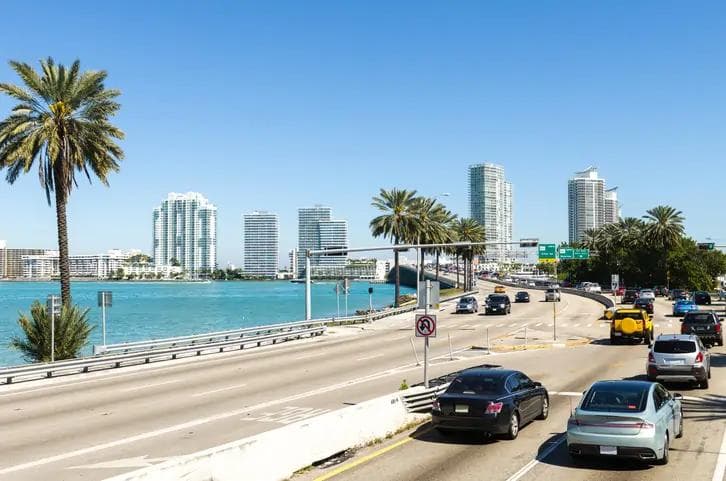Concrete industry says carbon capture a key to hitting emissions targets
Concrete industry says carbon capture a key to hitting emissions targets
Published by maria gbaf
Posted on October 12, 2021

Published by maria gbaf
Posted on October 12, 2021

By Cassandra Garrison and Valerie Volcovici
(Reuters) – Global cement and concrete makers on Tuesday laid out steps to cut carbon dioxide emissions 25% by 2030 and to reach zero net emissions by mid-century, relying on more carbon-free energy, new chemistry and manufacturing technology, and carbon capture.
Cement, the glue of concrete, accounts for about 7% of global carbon emissions, and the Global Cement and Concrete Association (GCCA) accounts for 80% of concrete made outside of China, and some companies within China.
The United Nations COP26 climate conference next month is spurring many companies to make emissions pledges. The GCCA plan to meet the previously announced goal of net zero emissions by 2050 did not lay out costs or break down how much each step would cut in emissions.
The plan includes finding and substituting more alternatives to clinker, a binder of cement, more use of alternative fuels, new chemistry and manufacturing processes, carbon capture and storage, increased efficiency in concrete use and pushing governments to approve new forms of concrete and buy them.
In an interview with Reuters ahead of the announcement, GCCA Chief Executive Thomas Guillot said 10 industrial-scale carbon-capture plants pledged in its roadmap by 2030 would be built and paid for by members.
Industry experts have cited major hurdles around getting widely unavailable carbon-capture technology up to speed by 2050, including regulatory issues, safety concerns, cost and public acceptance.
Guillot acknowledged the barriers but said members were having conversations with governments and regulators, while the GCCA had taken the matter up with international bodies. Those conversations also included carbon pricing.
“In 10 years, we need to prove not only the technical feasibility, but also the economic feasibility” of carbon capture, Guillot said. “We are confident this will work.”
Jeffrey Rissman, Industry Program Director at California-based Energy Innovation, said the blueprint from the GCCA was “surprisingly comprehensive,” praising plans for clinker substitution and use of alternative fuels. But he warned that burning plastic waste as an energy source would not prevent CO2 from getting into the atmosphere.
Mexico’s CEMEX, a GCCA member and North America’s biggest concrete producer, said it was seeking government support for its carbon capture programs.
“Most of these pilot projects will begin operations between 2023 and 2024. All those that prove to be on the right path will go into the next stage for scaling them up,” it said.
(Reporting By Cassandra Garrison and Valerie Volcovici; writing by Peter Henderson; Editing by Stephen Coates)
By Cassandra Garrison and Valerie Volcovici
(Reuters) – Global cement and concrete makers on Tuesday laid out steps to cut carbon dioxide emissions 25% by 2030 and to reach zero net emissions by mid-century, relying on more carbon-free energy, new chemistry and manufacturing technology, and carbon capture.
Cement, the glue of concrete, accounts for about 7% of global carbon emissions, and the Global Cement and Concrete Association (GCCA) accounts for 80% of concrete made outside of China, and some companies within China.
The United Nations COP26 climate conference next month is spurring many companies to make emissions pledges. The GCCA plan to meet the previously announced goal of net zero emissions by 2050 did not lay out costs or break down how much each step would cut in emissions.
The plan includes finding and substituting more alternatives to clinker, a binder of cement, more use of alternative fuels, new chemistry and manufacturing processes, carbon capture and storage, increased efficiency in concrete use and pushing governments to approve new forms of concrete and buy them.
In an interview with Reuters ahead of the announcement, GCCA Chief Executive Thomas Guillot said 10 industrial-scale carbon-capture plants pledged in its roadmap by 2030 would be built and paid for by members.
Industry experts have cited major hurdles around getting widely unavailable carbon-capture technology up to speed by 2050, including regulatory issues, safety concerns, cost and public acceptance.
Guillot acknowledged the barriers but said members were having conversations with governments and regulators, while the GCCA had taken the matter up with international bodies. Those conversations also included carbon pricing.
“In 10 years, we need to prove not only the technical feasibility, but also the economic feasibility” of carbon capture, Guillot said. “We are confident this will work.”
Jeffrey Rissman, Industry Program Director at California-based Energy Innovation, said the blueprint from the GCCA was “surprisingly comprehensive,” praising plans for clinker substitution and use of alternative fuels. But he warned that burning plastic waste as an energy source would not prevent CO2 from getting into the atmosphere.
Mexico’s CEMEX, a GCCA member and North America’s biggest concrete producer, said it was seeking government support for its carbon capture programs.
“Most of these pilot projects will begin operations between 2023 and 2024. All those that prove to be on the right path will go into the next stage for scaling them up,” it said.
(Reporting By Cassandra Garrison and Valerie Volcovici; writing by Peter Henderson; Editing by Stephen Coates)
Explore more articles in the Top Stories category











